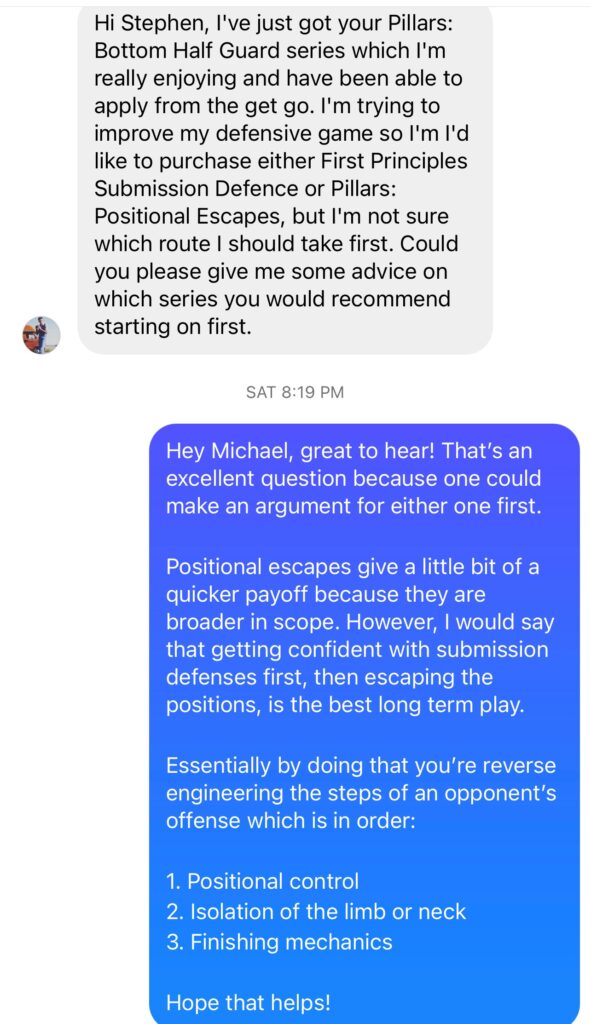I got this message from one of my online students asking about the next best topic to study:

Bottom line: positional defense and escapes are obviously a massive part of the game, and prioritizing learning them over learning submission defense would almost always provide more instant gratification…
BUT from a long term perspective, there is nothing more fundamental to developing confidence in your game, wherever it goes, than the ability to survive (i.e., not get finished).
In fact, submission defense has become one of my favorite topics in Jiu-Jitsu. I consider it to be the foundational skill set in the game, even before positional escapes.
For many years now I’ve been dedicated to the technical concept of “invincibility” in Jiu-Jitsu.
Thinking about Rickson Gracie getting out of fully locked rear naked chokes after putting his hands in his belt and letting black belts take his back, or Roger Gracie’s Houdini-like escapes in ADCC and Metamoris all demonstrate this concept at the highest level.
In my experience, being able to putting yourself in “just shy of checkmate” positions over and over again and becoming highly competent in escaping the submission without relying on strength or explosiveness is like a superpower.
I’ve found that this is particularly important as we age because in most cases older grapplers do not maintain the same level of physical output as athletes who are 20+ years younger.
This is why I created an entire instructional series specifically dedicated to the First Principles of Submission Defense:
What Makes This Series Different:
Rather than just create courses with a collection of techniques I’ve learned or developed, I went a step further…
Because let’s face it, it takes a long time to learn and remember new moves on an individual basis for every situation, let alone be able to pull them off in real time during rolling or competition.
In First Principles Submission Defense Vol 1 & Vol 2, I’ve solved that for you by giving you the key “80/20” framework to understand the fundamental postures and core principles at work in each type of submission.
In other words: you’ll quickly understand how the different categories of submissions work (and exactly how to reverse engineer them in real time), not just what to do in each individual situation.
This means you won’t be wondering “Wait, how do I defend this arm bar / this choke from this position again?” only to have that hesitation cost you the opportunity to escape.
Instead, I’ve done 80% of the work already so you’ll instantly know what’s happening and what to do, regardless of the type of submission threat or where it’s coming from.
That’s what first principles Jiu-Jitsu is all about!
